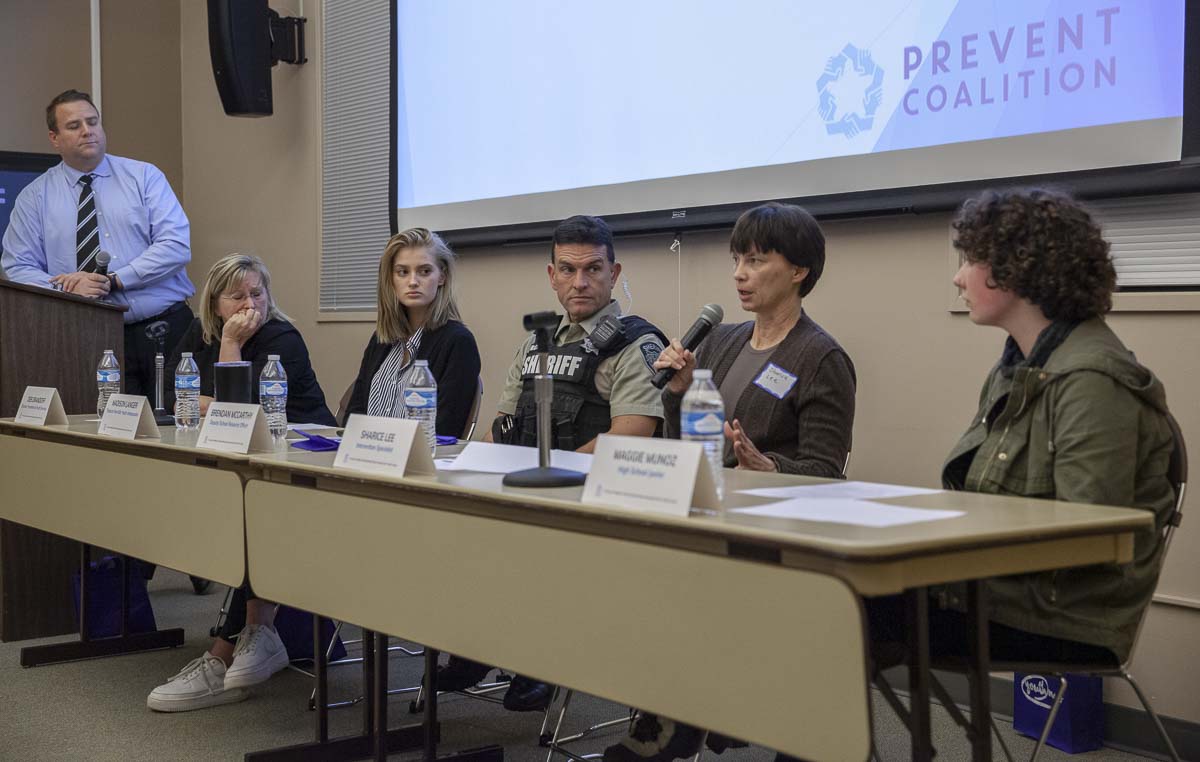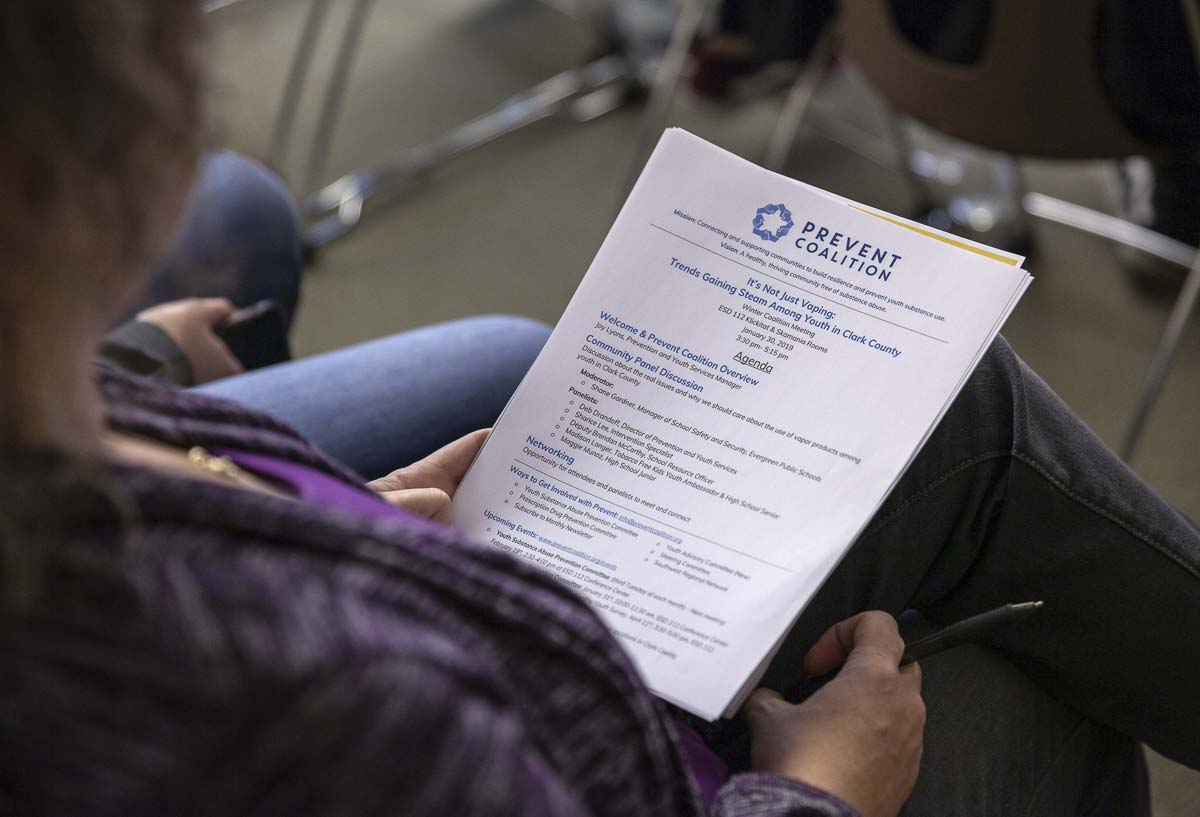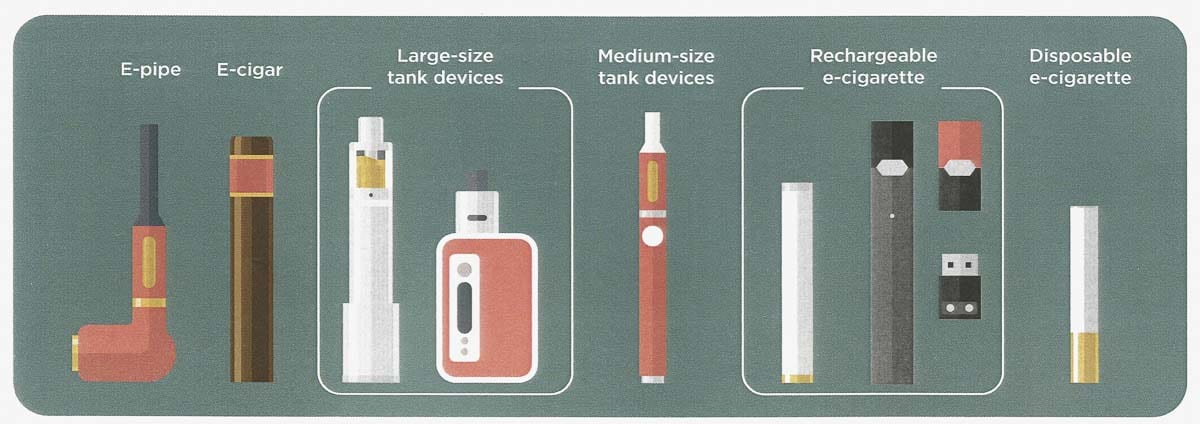ESD 112, Prevent Coalition and the state health department try to inform community on vapor products in schools
VANCOUVER — The ever-climbing trend of e-cigarettes and vapor products in the youth community is now a linch-pin issue for the Prevent Coalition in Clark County.
In 2016, over 2 million middle and high school students said they had used vape products within 30 days of being surveyed, reports the Centers for Disease Control and Prevention (CDC).
On Jan. 30, community members, parents, students, law enforcement, and media attended a panel hosted by Prevent Coalition. The goals set forth by the organization were to educate on the hazards of vape products and answer community questions.


“If you wanna go fast, go alone, and if you wanna go far, go together,” said panel moderator Shane Gardner, the manager of safety and security at Evergreen Public Schools, and past detective at the Clark County Sheriff’s Office. “We as a community want to be sustainable. One of the things that has happened with this trend in vaping, is it’s the ‘new’ thing.”
In addition to Gardner, the panel included:
- Deb Drandoff, director of prevention and youth services
- Sharice Lee, an intervention specialist from Prairie High School
- Brendan McCarthy, Clark County Sheriff’s school resource officer for Heritage High School
- Maggie Munoz, a high school junior
- Madison Langer, a high school senior, who is a certified youth ambassador for Tobacco Free Kids Youth
The conversation centered around three main topics: what vapor products are, how they affect youth and what can be done in this community to mitigate and prevent those affects.
“We aren’t educated on what they are,” said high school senior and Youth Ambassador Madison Langer. “Often times we call it ‘vaping’ because we think it’s some type of water vapor that we’re inhaling. But it’s not, it’s actually an aerosol. They don’t understand the danger.”

Prevent Coalition, which is backed by Education Service District 112, began its efforts in 2003. In 2007, the group received a $100,000 grant each year for five years. In 2016, they moved a piece of their funding and focus to understand vaping.
Here is some of what they and other partner agencies found:
- Vaping in Clark County schools is on the rise, with new ways to hide the products, like in hoodies, gum packs, chisel tip sharpies, and using in bathrooms, all on the list
- Nicotine in vape products can harm brain development the CDC found
- JUULs, the most successful e-cigarette brand, contain as much nicotine in one JUUL pod as a pack of 20 traditional cigarettes
- Diacetyl and formaldehyde are chemicals harmful to the human lung, and are often found in vapor products like JUULs according to the CDC
- Condensing liquid in the lungs caused by the vapor can adversely affect breathing
“Kids are both ingenious and idiotic,” said Heritage SRO Brendan McCarthy. “They’re ahead of adults in many trends, yet they don’t understand the repercussions of their actions.”

McCarthy went on to explain how he intercepted a trade at his school, where one student attempted to trade a $300 game console for a JUUL. He also warned against what he sees as possible outcomes of more violent transactions.
In Hazel Dell, a high school student was murdered over a social media transaction for $50 of marijuana.
“If you’re willing to murder someone for $50 worth of weed, you’ll be willing to do it for a $100 JUUL and a bunch of pods,” McCarthy said.
At the end of last month, the New York Times published research findings from Great Britain, which suggest vape products are twice as effective as current, approved methods for helping adult smokers quit.
Youth prevention professionals and the CDC say, the opposite applies with youth.
“For adults it’s ‘either or,’ for teens it’s ‘give me more.’” said Sharice Lee, intervention specialist for Prairie High School. “They will become dual users. It can actually be a smoother road to addiction, because there’s not the stigma.”

Lee explained that sans scratchy throat and smoky smell, vape has the potential to become far more attractive than traditional cigarettes ever were.
For now, a lack of conclusive evidence, FDA warnings, raised age restrictions, and damning examples, make it difficult to persuade young people that vaping is dangerous.
One panel member pointed out that it may take decades to reach the level of understanding about vapor products that we have about cigarettes today.
In spite of the hurdles, some students who used to use and know the risks now, are speaking out.
“The whole reason I’m a youth advocate, is I’m someone who will always be honest,” Langer said. “I think open education is super important when it comes to drugs, and substance abuse, especially tobacco. We need to change the way we have our discussions and be more honest.”




